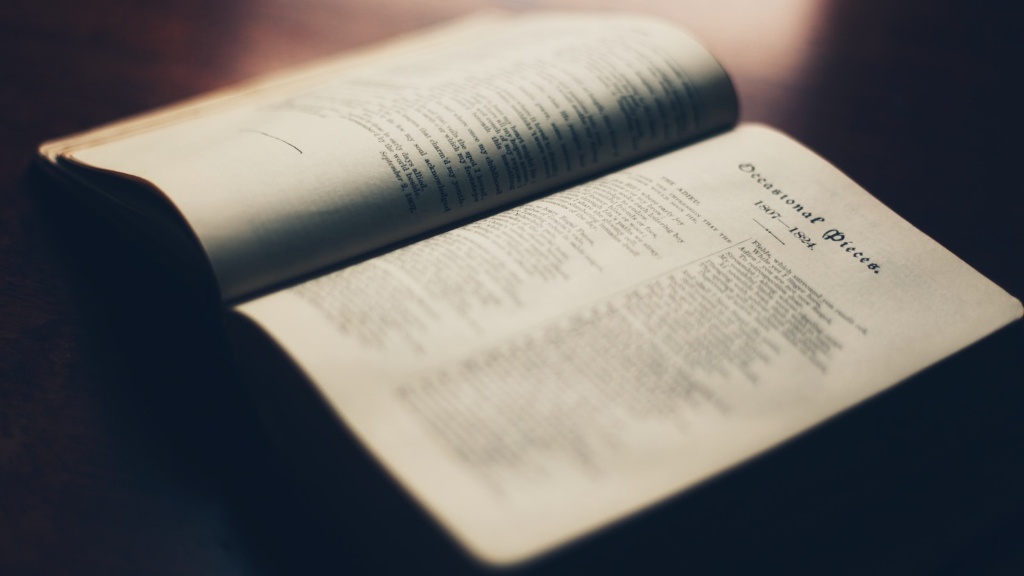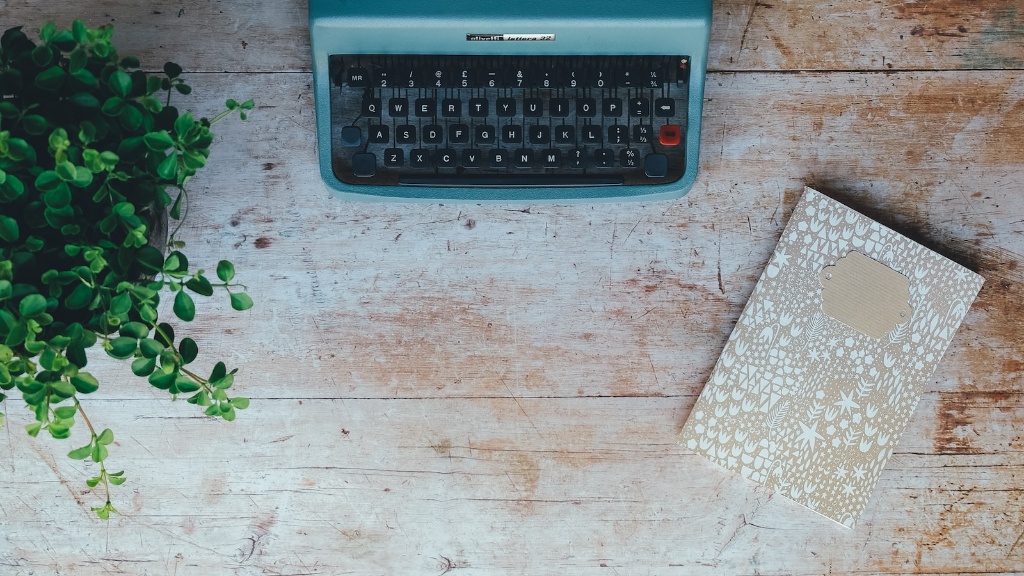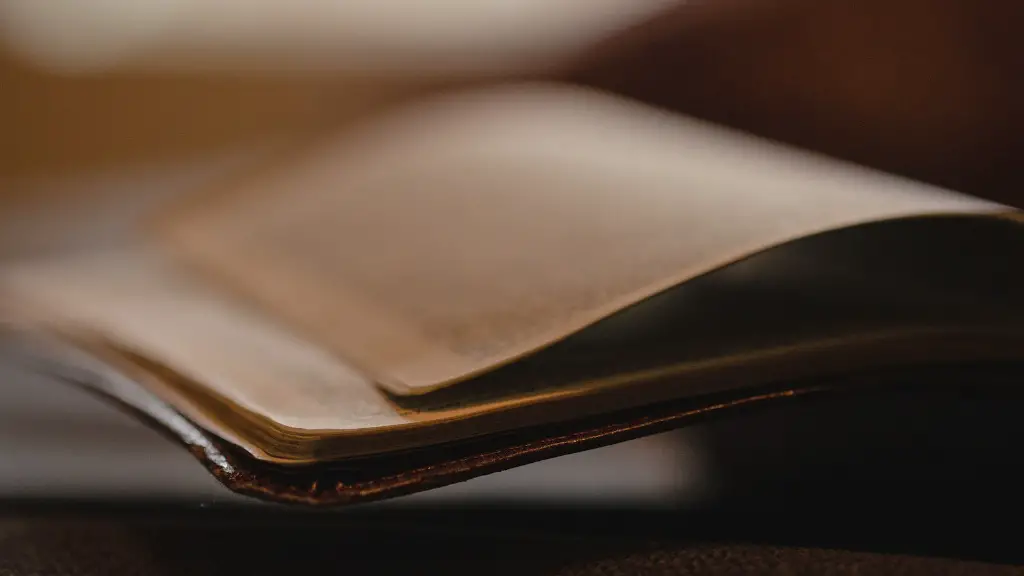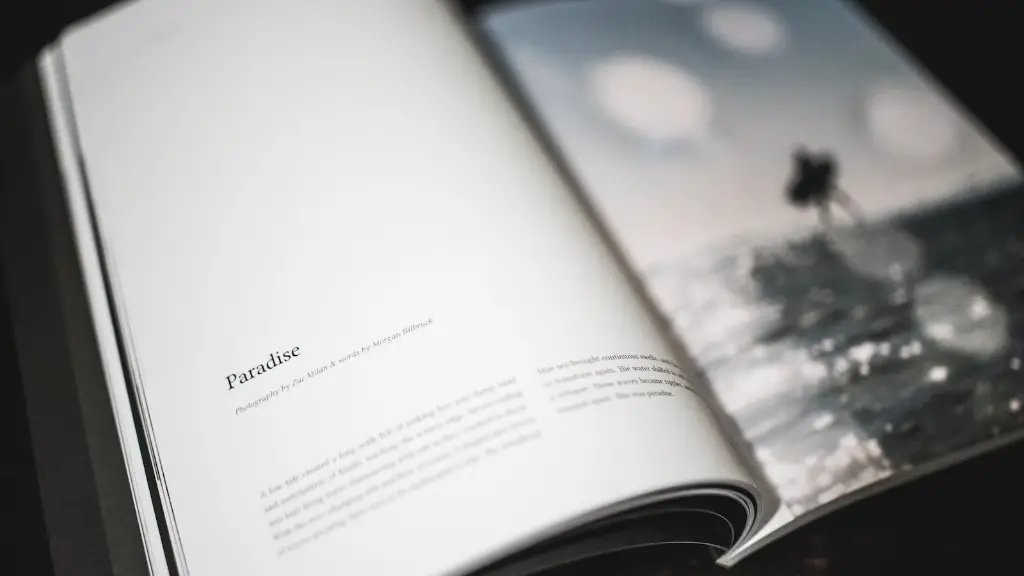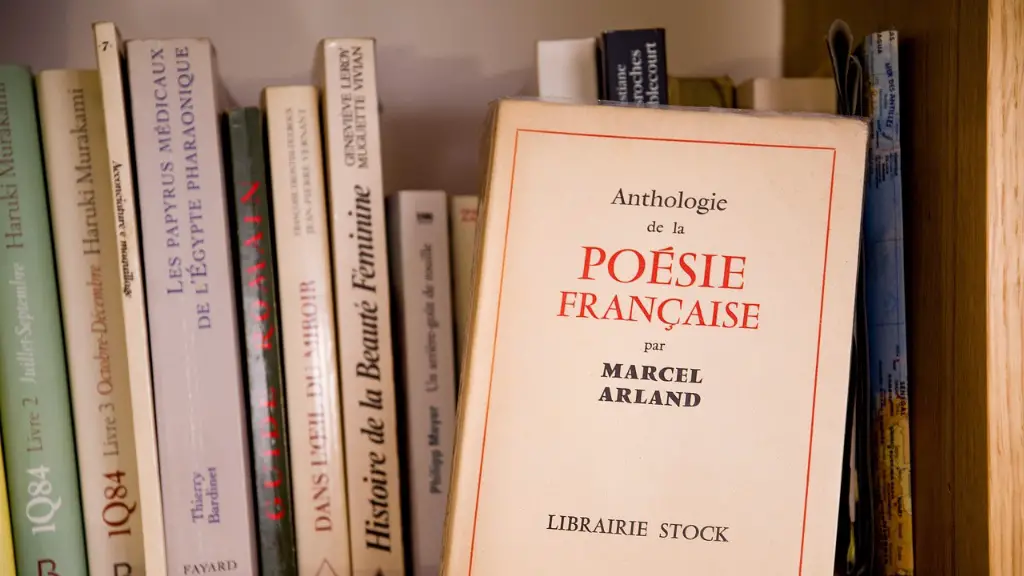Enjambment is a poetic term used to depict the continuous flow of a sentence over more than one line of a poem, sometimes abruptly. It is one of the signatures of modern poetry and can provide an interesting twist to a poem’s narrative. It involves breaking a sentence down in the middle of its cadence, and continuing the idea or phrase on the next line. The use of enjambment works to encourage ambiguity and allow for multiple meanings, which can resonate with readers in different ways. It is a common feature of contemporary poetry and has been used by poets for centuries.
Enjambment provides lyricism and musicality to a poem and can draw a reader into the poem’s story. Often, the sense of the sentence is not complete until a third or fourth line is read. It is a great way of conveying a concluding thought in a poetic tone, but can also be used to force the reader to interpret the context. Additionally, an enjambed line can draw a reader’s attention to a metaphor or comparison.
It is important to mention that the use of enjambment is usually used quite consciously by the poet in order to achieve a desired effect. For example, the first line of “The Waste Land” by T. S Eliot reads “April is the cruelest month, breeding”. This line is highly enjambed as the verb “breeding” does not even begin to finish the thought. Instead, Eliot encourages the reader to read further into the poem in order to uncover the complete thought contained within the line.
Enjambment is also used in songs, especially rap songs. By not allowing the line of a song to be finished on its first line, rap artists provide structure and emphasis to their spoken word. As with a poem, the use of enjambment in lyrics provide an unexpectedness that can be both arresting and exciting. Often the relationship of a sentence’s first line and its second line generates a certain tension in the song that the musician can exploit and use to transform the song’s meaning.
Often, writers incorporate the usage of enjambment in order to emphasise certain elements of a poem. It can be used for poetic effect, to slow the readers progression through a poem, or even to break up a seemingly mundane cadence of a poem. It can also be used to emphasise a certain idea or thought so that certain literary devices, such as a metaphor or symbol, will stand out and be prominent in the reader’s mind.
Enjambment can be used by a poet to provide a sense of natural flow in a poem, allowing the poem to keep its momentum up. Rather than cutting off a poem into segments, enjambment allows a poem to feel as one continuous thought, as if it were written in one flowing stream.
Enjambment can also be used to create a balance between lines, allowing for a sort of juxtaposition between two ideas or thoughts. When coupled with appropriate poetic devices, the use of enjambment can evoke emotions and thoughts in the reader. It is an indication that the poet wishes for the reader to ‘pause’ and take in what has been said before proceeding, helping to create a mental image in the reader’s mind.
Types of Enjambment
There are two main types of enjambment: partial, which does not finish the idea of the sentence; and full, which does finish the thought. Partial enjambment, as mentioned before, is often used to create a strong emphasis. It can be used to make connections between the end of one line and the beginning of another, or to draw the reader’s attention to a particular word or phrase. This can be seen in Robert Frost’s poem, “Stopping by Woods on a Snowy Evening”, where the same word appears at the end of the first line and the beginning of the second line: “The woods are lovely, dark, and deep.”
Full enjambment does finish the thought, but does so utilizing a complete thought. This natural continuation of the sentence creates a poetic form in the text and can be used to break up monotonous phrases and give the poet room to elaborate on the idea presented.
Partial enjambment can also be used to draw attention to a specific word. One example of this is in William Shakespeare’s Sonnet 42 “That thou hast her it is not all my grief”. By ending the first line on “her” and beginning the second with it, the reader is made to focus on, and dwell on, this word as a signifier.
Examples of Enjambment in Poetry
Examples of enjambment can be found throughout the entire history of poetry. One classic example is Robert Frost’s poem “Stopping by Woods on a Snowy Evening”. The poem begins with the famous partial enjambment: “Whose woods these are I think I know / His house is in the village though”. Here, Frost builds a sense of mystery and suspense by finishing half of a thought in one line and leaving the second with unanswered questions. The reader must read the whole poem to understand the emotions and thoughts the speaker is struggling with.
Another classic example of enjambment can be found in WB Yeats poem “The Second Coming”. Here, the poet creates a strong contrast between the lines “Things fall apart; the centre cannot hold/ Mere anarchy is loosed upon the world”. The power of this poetic device lies in the difference between the two lines and the way in which they are woven together. Through the powerful enjambment, Yeats creates a vivid picture of a world in chaos.
Uses of Enjambment in Modern Poetry
Enjambment is a common feature in contemporary poetry, for both poets and readers alike. In much the same way as classical poetry, modern poets use enjambment to create vivid images and sounds within their poems. Enjambment allows a poet to break up the momentum of the poem to make a specific point, or to emphasize a particular word or phrase.
Contemporary poets also use enjambment to create a sense of disjointedness in their poems. By breaking up the natural cadence of a sentence, enjambment allows the poet to create a jarring effect that encourages the reader to think more deeply about the poem’s meaning and imagery.
Enjambment is also used by modern poets as a way to create a seamless transition between two lines of the poem. This can be used to draw attention to a central image or idea in the poem, or to slow the reader’s progression through the poem.
The Benefits of Enjambment
Enjambment can be a powerful poetic device, allowing poets to create images and sounds in their poems that would otherwise be impossible. It can also be used to draw attention to specific words or phrases and create a seamless flow between two lines of a poem. Additionally, it is a great way of emphasizing the climax of a poem and guiding the reader through it.
Moreover, enjambment can be used to create a sense of suspense in the poem by drawing out the final idea or thought until the reader has read to the end. In this way, it creates a bridge between two ideas and encourages the reader to invest in the poem before reaching the end.
All in all, enjambment can be a powerful way for poets to create emotional appeals and to convey their thoughts in an effective way. The ability to draw out ideas and thoughts, to emphasize certain words and phrases and to create suspense, makes enjambment an invaluable tool for poets of all ages.
The Language of Enjambment
Enjambment is the language of literature and of the arts. It is an essential element of creative writing, allowing poets and authors to express feelings, ideas and thoughts in a captivating and compelling manner. By using enjambment, poets are able to take their writing to the next level, creating imagery and soundscapes that capture the readers’ emotions.
Without enjambment, poetry would be limited to conventional word and sentence structures, losing much of its emotional appeal. Enjambment allows a poet to transcend the mundane, to create imagery and feelings that evoke a response in the reader. It is a gateway to a new world of expression and creativity, allowing poets to tap into a far deeper emotional level.
By creating a flow between two lines of a poem, enjambment can also bring out the multiple meanings in a poem. This is why it is such a powerful tool in ambiguity and why it has been used so frequently throughout the ages. By creating enjambment with intricate patterns and rhythms, poets can get the readers attention and embody the poem in its entirety.
Enjambment in Poetical Devices
Enjambment can also be used to draw attention to specific words or phrases. By breaking up a poem into different segments, the poet can emphasize certain words, creating tension and meaning in a poem. This can include anything from metaphors to alliteration, allowing the words to shine and draw attention to the poem’s narrative.
In addition, enjambment can be used to evoke certain feelings in the reader. Through the juxtaposition of different ideas and the use of the right words, a poet can create a powerful response in their readers. It is a great way of reinforcing any sort of emotional appeal that the poet may be making and can lead to even further engagement with the poem.
Finally, enjambment is a great way of conveying a certain energy and movement within a poem. By creating a flow between lines, the poet can create a sense of movement and give the poem a certain momentum. This can be used to draw the reader further into the poem and help them navigate the various ideas contained within.
The Meaning of Enjambment
The use of enjambment in poetry is a way of providing the reader with suspense, ambiguity, emotion and flow. It is a way of presenting multiple meanings in a poem without losing the cadence. It is also a way of drawing attention to certain words, ideas or symbols and evoking specific feelings and emotions in the reader.
All in all, the use of enjambment can be a powerful tool for writers and poets. It allows poets to create a sense of flow in their work and to create imagery and soundscapes that can make an impact on the reader. It can also be used to reinforce certain ideas or symbols, and to evoke certain emotions in the reader.
